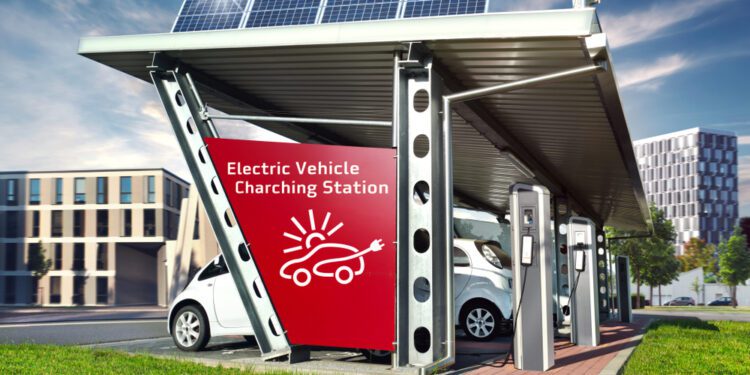The top motivator in EV sales remains environmental concern, while penalties with ICE vehicles and EV incentives emerge.
With many key markets consumed by the triple-whammy of shifting to an endemic COVID-19 strategy, whether to hold back or double down on climate change and the geopolitical challenges of the so-called “permacrisis,” perhaps it’s no surprise that the revival in consumer mobility hasn’t quite materialized as the industry might have wished for.
So, what is happening, and what will it mean for original equipment manufacturers (OEMs) and their suppliers and dealers, for transport authorities and policymakers? The headline findings from the EY Mobility Consumer Index (MCI) 2022 study (pdf) reveal that consumers are continuing to travel less than in pre-COVID-19 times but their preference for the car — and electric vehicles (EVs) in particular — is growing ever stronger.
The MCI survey — now expanded to encompass nearly 13,000 consumers across 18 countries — is a major global EY research program that has tracked consumer mobility patterns and buying intentions since the start of the pandemic in 2020. While overall levels of travel reported remain lower when compared to the pre-pandemic benchmark, the number of consumers who say constant access to a personal car is very important to them is rising, and for the first time more than half of those surveyed, 52%, who intend to buy a car say they intend to choose either a fully electric, plug-in hybrid or hybrid vehicle.
Conversely, consumers continue to avoid public transport when they can. After two years of heavy public health messaging around social distancing, usage remains stubbornly below 2020 levels, despite the efforts of many city authorities and transportation companies. In London and New York, for example, intensive ad campaigns are endeavoring to persuade travelers that it’s now safe to travel by bus, metro and train again.
Consumer sentiment toward shared mobility (ride-hailing, car-sharing and car rental), broadly on the rise pre-pandemic, has also taken a hit from COVID-19. Journeys are down 11% in North America and 4% globally, a reversal of fortune driven partly by hygiene concerns and partly by rising journey costs and reduced availability.
These trends present both an opportunity for OEMs and dealers to continue accelerating the shift to EVs, and an apparent threat to the sustainable transport ambitions of many city authorities and national governments, which depend on getting more people out of their cars and into public and shared modes of mobility.
Squaring the circle may require a three-pronged approach from policymakers: leaning into consumer preferences for EVs where they can; dis-incentivizing the use of internal combustion engines (ICEs), especially in urban environments; and heavily incentivizing public transport in the short term to encourage greater use.
Feeding into this picture are external factors around geopolitics — the war in Ukraine especially — and the consequences for ongoing supply chain disruption. Factors that have the potential to morph from short-term to long-term problems, which could have a substantial impact on OEMs ability to meet demand.
Chapter 1
Mobility shift ahead
Hybrid and remote working have changed travel patterns.
Both work- and nonwork-related travel remain below pre-COVID-19 levels, down 11% and 8%, respectively, from 2021 expectation. This pattern looks set to remain at least in the medium term. Although offices are reopening, the new norms of flexible and remote working are impacting work travel. And increasingly digital lifestyles — at first imposed on consumers by the pandemic — now appear to have become active choices for many, and are a persistent factor in reducing non-work travel.
Monthly work journeys by the two most popular modes — public transport and the car — are down 15% and 11%, respectively. Car rental is the only mode of transport that shows an increase on pre-COVID-19 levels of work-related travel, up 5% in 2022.
How much more work-related travel will recover is a moot point; commuting appears to be in secular decline as a result of hybrid working. Almost two-thirds of those surveyed work from home at least once a week, up from less than half pre-COVID-19. And 31% do so at least three or four times a week, up from 17% pre-COVID-19.
The overall travel picture is less of a bounce back and more of a steady recovery. Travel for both work and non-work purposes remains down 9% on average, compared to pre-pandemic levels.
Despite lifts in official travel restrictions in many countries, consumers in 2022 are still choosing to travel less than they did before the pandemic. Travel appears to have become a discretionary activity, but when consumers do choose to travel, they prefer to do so in their personal car. Sixty-three percent say that constant access to a personal car is important to them, up from 57% in 2021.
Hygiene factor here to stay
When it comes to choosing modes of transport, hygiene and the perceived risk of infection remain top of the list of consumer concerns — 65% say it is very or extremely important — little changed from the 67% reported in 2021. Having encouraged their populations to stay at home and stay safe, governments and transport authorities may have inadvertently created a new and potentially limiting narrative around transport safety in consumers’ minds. On a sliding scale where the private car is regarded as the safest and most hygienic mode, public transport is represented as the least and shared mobility, such as taxis and ride-sharing options, occupy the middle ground.
Public transport ‘‘satisfaction gap’’
If the car — especially the EV — is the “winner” in the minds of consumers, then public transport is surely the loser. Work journeys by public transport are down 15% globally compared to pre-COVID-19 levels and it’s a trend across all three major regions — Asia-Pacific, Europe and the North America. Work travel by public transport fell by a hefty 35% in Australia, 30% in Canada and 29% in Italy. Of the 18 countries in the survey, only one — India — reported a small increase in public transport usage, up 1%.
While hybrid working may result in a secular decline in public transport use, the MCI research suggests that a “satisfaction gap” is currently the defining problem for consumers. This satisfaction gap places public transport in the unfortunate position of being best at delivering what consumers care least about and worst at delivering what they care most about.
For example, consumers place the greatest importance on the perceived hygiene risk of using public transport, but their level of satisfaction with how that hygiene risk is managed is very low. Conversely, while levels of satisfaction with the ease of paying for public transport is very high (thanks to the widespread adoption of contactless payments) consumers do not regard ease of payment as a deciding factor.
With sustainable transport a key plank in climate change initiatives, overcoming the satisfaction gap is emerging as a major challenge for city transport authorities. A carrot and stick approach may yield results, with 46% of consumers saying that free public transport would reduce their usage of private cars, and 38% saying that urban traffic charges would also lead then to take fewer journeys by car.
Many city transport authorities — under severe financial pressure after many months of dramatically reduced passenger revenues — may be tempted by the revenue-boosting potential of road usage fees, which also offer the prospect of a hedge against falling incomes from vehicle and fuel taxes as EVs become more prevalent.
Shared mobility shake-up
Shared mobility (ride-sharing, car-sharing and car rental) — one of the pre-pandemic success stories when it comes to more sustainable urban travel in particular — has largely gone into reverse. Globally it has declined 4% on pre-COVID-19 levels, but in North America, shared mobility is down a hefty 11%. Consumer dissatisfaction with the hygiene of shared mobility emerges as a key factor, but satisfaction levels with the cost of travel and availability are also low. And with fuel prices up sharply — gas in the US is now 60% more expensive than in pre-COVID-19 times — those costs are likely to rise even further. Availability may also continue to suffer; reports from protesting ride-share drivers in the US suggest that some of them may leave the platform altogether as the cost of fuel continues to eat into their earnings.
Some shared mobility providers have responded to falling demand by diversifying into last-mile deliveries, a sector that has flourished during the pandemic. Recent EY research estimates that booming last-mile demand will result in 36% more delivery vehicles on the streets of the top 100 global cities by 2030.
Car rental is the only form of shared mobility to have grown on pre-pandemic levels, up 5% for work-related and 2% for nonwork-related travel, thanks largely to its perceived low hygiene risk. Further growth may be constrained by ongoing fleet shortages (largely due to stalled semi-conductor production globally), which are hitting availability and pushing up prices for consumers.
Courtesy EY. Click here for full report












